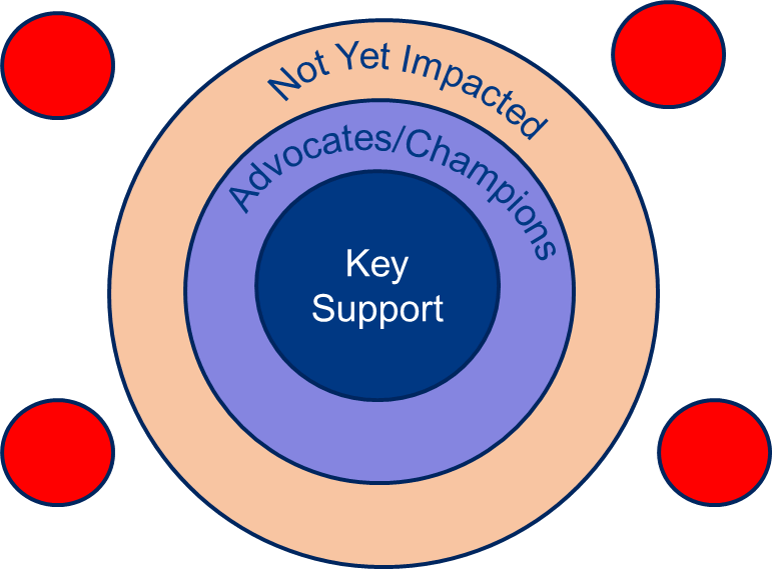Peter Senge, in the Fifth Discipline outlines how we can understand systems around us and the importance of pulling the right levers and being aware of what other levers change when we do pull certain levers.
One “archetype” of a natural system at play in most areas of life is “Limits to Growth.”

As we work to expand something, grow something, do a function more we need to be aware, there may be a limiting condition around the corner.
A farmer may grow a crop using fertilizer only to grow more than what the average rainfall of the area can sustain.
We may work a few more hours each day to get some work done but the stress adds up and we notice our internal limits are exceeded causing us to be burnt out.
A new area I noticed (thanks to the help of a friend and colleague who outlined their plan explained below) is when we think of expanding a service or function in an organization.
Consider a new initiative that is yet to have full organizational support but is widely successful and impactful. Many around the organization see its value and want to support the initiative…maybe its a new diversity, equity, inclusion initiative.
But it may be missing key top leadership support or have a limited budget.
You could expand the initiative out and continue to push it to the masses who you know will love it, adopt it, and move it forward. However, eventually you will have so many people wanting to join in that you will need to hire more people or expand the budget or need deeper support from top leaders. All this can make the growth unsustainable. People will be annoyed by your lack of responding to requests or feel let down by the expectations that were not met or leaders will divest in the initiative because it has gotten beyond what they initially supported.
To solve this, we can think of the initiative as concentric circles.

The center circle is your key support. Executive leaders bought into the initiative. Budget commitments to grow the movement. Key influencers and stakeholders.
The second circle is your advocates or champions. People who will do a lot of the hard work to make things happen. These people would likely be bought into the initiative no matter what but do not have as much organizational power as the key support.
The outer circle are those who are not yet impacted. Your “outreach” or those you can impact and get support from if they knew more about it.
Beyond the outer circle are other smaller circles of people who are likely resistant to the change. Often it’s difficult to get them bought into the change. It is worth evaluating if there are too many little outer circles to make the change effective but often best to not manage to their needs or expectations if the change is truly needed.
The error that can be made is to expand the outer circle. Focus all effort on growth and expansion of the initiative. Push harder. However the inner circle is your limiting condition. Peter Senge says the key to leverage with this model is identifying and changing the limiting condition.
For the concentric circles, focus first on growing the inner circle of key support. Expand there so as it grows out, it can be sustained.
Sometimes we need to keep outward growth going while also investing on the limiting condition. We can’t slow the outward growth but need to also focus priorities on the limiting condition.
It may be easy to stop there but we should not. There will always be limiting conditions after we remove or remedy one. Be on the lookout for what could be the next limiting condition.